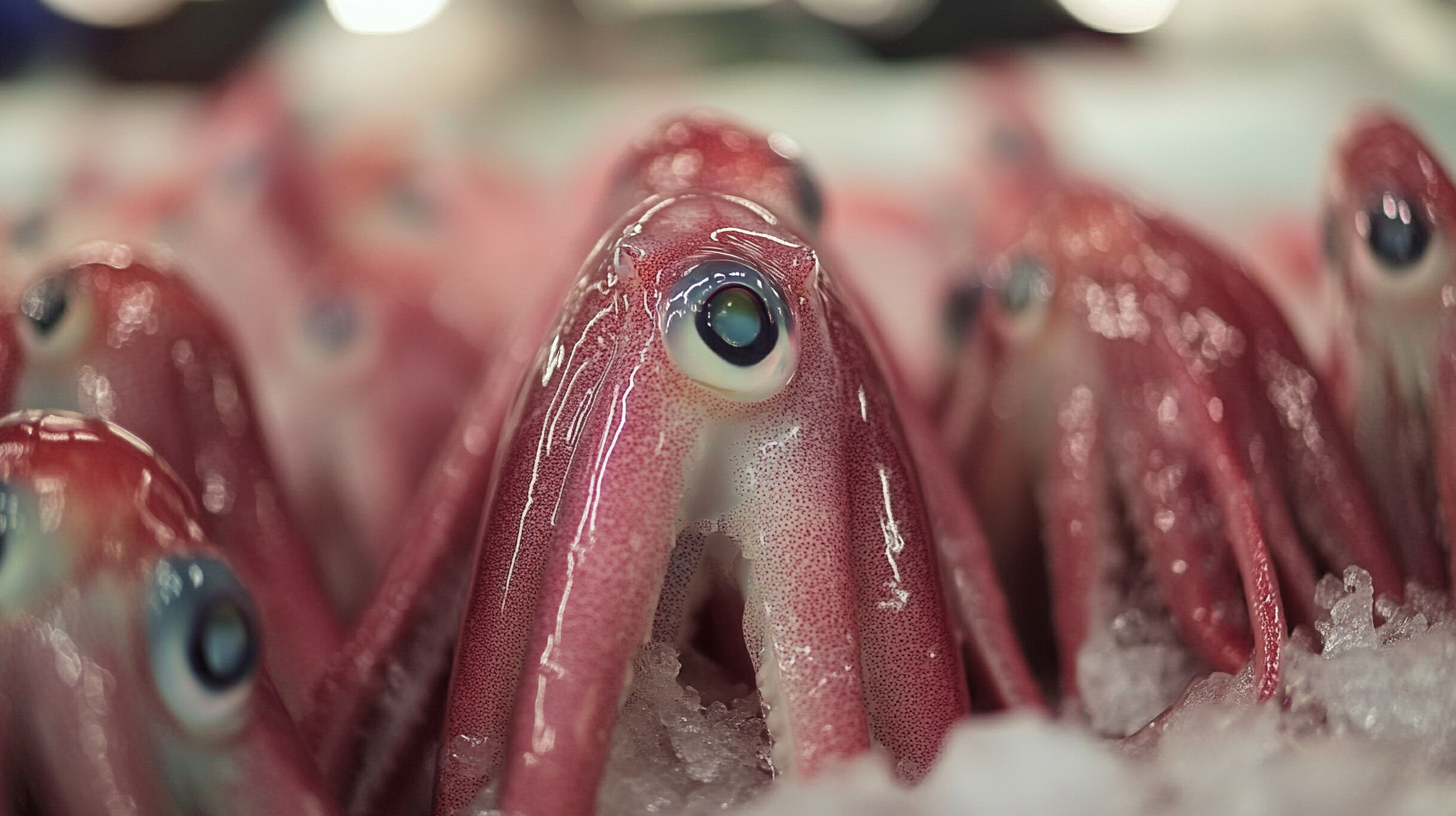In recent years, the Chinese frozen squid manufacturing industry has faced significant challenges due to the imposition of tariffs by the United States. However, despite these hurdles, the sector has exhibited remarkable resilience and growth. As more consumers look for convenient meal solutions, cooking frozen squid has gained popularity, highlighting the versatility and nutritional benefits of this seafood. The ability to adapt to the evolving market conditions, coupled with innovative production techniques, has allowed Chinese manufacturers to thrive, even in the face of adversities. This blog will explore how the frozen squid industry is navigating the complexities of international trade and capitalizing on the increasing demand for quick and delicious meal options across the globe.

Chinese frozen squid production has shown remarkable growth in recent years, despite the ongoing challenges posed by tariffs between the US and China. As global demand for seafood continues to rise, Chinese manufacturers have adapted their strategies to capture a larger share of the international market. Innovations in processing technology and supply chain management have played a pivotal role in enhancing production efficiency and maintaining high-quality standards.
The growth trends in the frozen squid industry reveal a dynamic shift towards diversification and sustainability. Many producers are focusing on eco-friendly practices and sourcing squid from responsibly managed fisheries. This commitment not only appeals to environmentally conscious consumers but also positions Chinese frozen squid as a preferred choice in global markets. With increasing investments in research and development, Chinese companies are likely to continue expanding their product offerings, catering to a variety of culinary preferences across different cultures.
| Year | Production Volume (tonnes) | Export Volume (tonnes) | Main Export Markets | Growth Rate (%) |
|---|---|---|---|---|
| 2018 | 150,000 | 110,000 | US, Japan, South Korea | 5.0 |
| 2019 | 160,000 | 115,000 | US, Japan, European Union | 6.7 |
| 2020 | 170,000 | 120,000 | US, Southeast Asia | 6.3 |
| 2021 | 180,000 | 130,000 | US, Japan, South Korea | 5.9 |
| 2022 | 200,000 | 140,000 | US, Japan, Middle East | 11.1 |
| 2023 | 220,000 | 160,000 | US, Japan, South Korea, EU | 10.0 |
Chinese frozen squid manufacturers have demonstrated remarkable resilience in the face of US-China tariff challenges. With tariffs impacting the cost structure of seafood exports, these manufacturers have ingeniously adapted their strategies to not only survive but thrive in the competitive market. By streamlining their supply chains and investing in technology, they have managed to reduce production costs and enhance efficiency. This adaptability has allowed them to maintain price competitiveness despite external pressures.
Moreover, Chinese producers are increasingly focusing on diversifying their markets. Instead of relying solely on the US, they are seeking opportunities in regions such as Southeast Asia, Europe, and the Middle East. By expanding their customer base, they mitigate the risks associated with tariff volatility. Additionally, manufacturers are emphasizing quality and sustainability in their products, which appeal to a growing number of conscious consumers worldwide. This strategic pivot not only helps them navigate current challenges but also positions them favorably for future growth.
This bar chart illustrates the growth of Chinese frozen squid exports from 2018 to 2022, showing resilience despite tariff challenges from the US. The data reflects the strategic adaptations made by Chinese manufacturers amidst the shifting trade landscape.
The global seafood market, particularly the frozen seafood segment, is experiencing robust growth driven by increasing consumer demand for convenience and quality. The frozen food and feed market is projected to reach a remarkable value of $29.5 billion in 2024, with an anticipated compound annual growth rate (CAGR) of 5.5% from 2025 to 2034. This surge is indicative of a broader trend within the food industry, as consumers increasingly seek innovative and high-quality frozen options to enhance their dining experiences.
Moreover, the seafood processing equipment market is on track to grow from $2.49 billion in 2024 to an impressive $3.81 billion by 2032, achieving a CAGR of 5.4%. This growth aligns with the rising demand for various seafood products, including mollusks, which are expected to see significant increases in market size and share over the coming years. As consumer preferences shift towards convenient and high-quality food options, the frozen seafood sector is well-positioned to thrive amidst the evolving market dynamics.

Amid the tumultuous trade landscape shaped by US-China tariffs, the Chinese frozen squid manufacturing sector has been both challenged and invigorated. According to a recent report from the United Nations Food and Agriculture Organization, global seafood consumption is expected to increase by 25% by 2030, emphasizing the growing demand for frozen products. Despite the 25% tariff imposed on Chinese seafood exports by the US, manufacturers have pivoted by enhancing quality and expanding outreach to new markets. Indeed, recent data indicates that China’s seafood export value reached approximately $7.6 billion in 2022, with squid being one of the top commodities.
Simultaneously, these tariff challenges have sparked innovation within the sector. Many producers are leveraging technology to streamline operations, reduce costs, and comply with international quality standards. Recent market analysis from the Seafood Trade Intelligence Portal shows that while is evident that the cost pressure from tariffs has affected profit margins, the industry is seeing a shift toward sustainable practices that resonate with environmentally conscious consumers. This dual focus on addressing tariff impacts while seizing new growth opportunities positions the Chinese frozen squid market to navigate through adversity effectively.
This pie chart illustrates how Chinese frozen squid manufacturers have adjusted amidst US-China tariffs, highlighting a shift towards increased exports to other countries while experiencing a decrease in exports to the US.
The Chinese frozen squid industry has shown remarkable resilience in the face of ongoing tariff pressures from the U.S.-China trade dispute. With U.S. tariffs on certain seafood products, Chinese manufacturers have refocused their strategies to adapt to the changing market landscape. This shift includes diversifying export destinations, enhancing product quality, and reducing reliance on U.S. imports. Key markets in Asia, Europe, and South America are increasingly sought after, as Chinese producers aim to maintain their competitive edge while navigating these financial headwinds.
Looking ahead, several predictions can be made for China's frozen squid industry. As global demand for seafood continues to rise, the segment is expected to experience growth despite external challenges. Innovation in fishing and processing technologies will further support this expansion, enabling producers to meet the evolving consumer preferences for sustainable and high-quality frozen products. Furthermore, if trade relations improve, there could be a resurgence of exports to the U.S., providing an additional boost to the industry’s growth trajectory. Ultimately, the ability to adapt and innovate will be crucial for Chinese manufacturers as they continue to thrive in a complex international trade environment.

